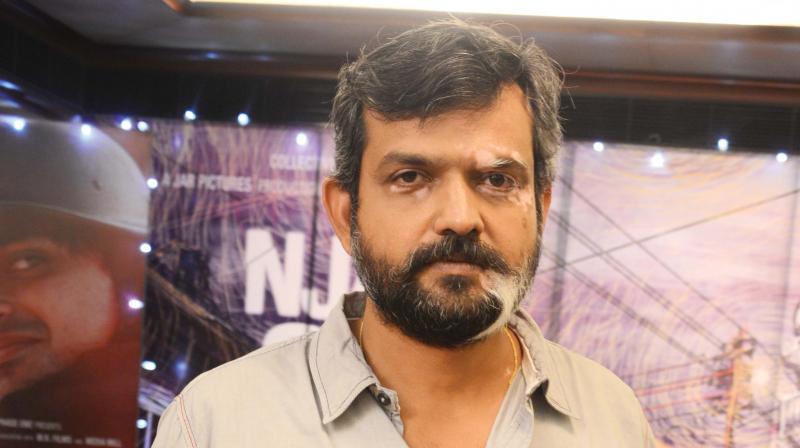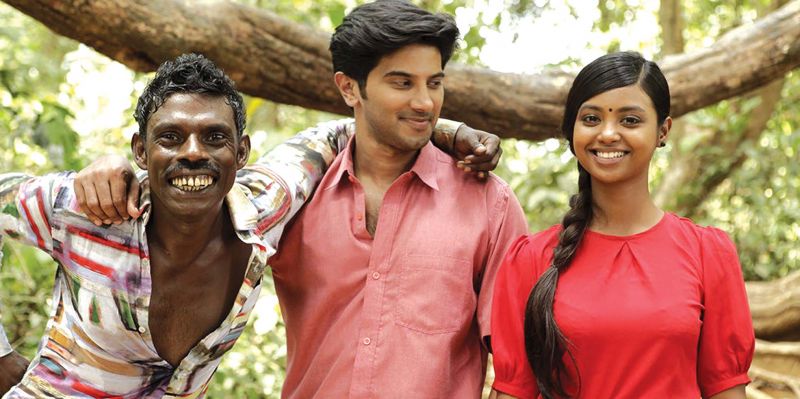Marrying Art and the Commercial
For Rajeev Ravi, clarity and reach of films are as important as their aesthetics.

Rajeev Ravi has made just three films — Annayum Ra- soolum, Njan Steve Lopez and Kammatipaadam — but each is remembered by film lovers as well as critics. Successfully bridging the art-commercial divide, he has quickly risen to the level of a veteran. Perhaps the reason why the Kochi-Muziris Biennale is organising a retrospective of his films every evening from January 20 to 22. Laughing off the suggestion that he is a veteran, he insists that he is a beginner. “It takes me about five years to do the research for a film. The ideas of these three films have been germinating since I entered the film word as a cinematographer. In fact, I wrote the first draft of Kammatipaadam in 2010,” he says.
On pursuing the ‘middle path’, he candidly says that he is only doing what others like K.G. George had attempted long back. Taking one through his three-film oeuvre, which reached its zenith with Kammatipaadam, he says that Annayum Rasoolum is but his interpretation of Romeo and Juliet while Steve Lopez is a bolder attempt of a newcomer. “By the time, I came to Kammatipaadam, I became more direct and particular that it should have a larger reach. The response has been encouraging and varied,” he says. It is important, Rajeev emphasises, that people watch his films. “I don’t see much point in making films that satisfy myself or intellectuals alone but ones that appeal to a theatre-going crowd,” he says. He quotes Ritwik Ghatak to drive home his point; Ghatak had said that the day television arrived, he would shift to that medium.
At the centre of Kammatipaadam is the development agenda, he explains. “When we think of a city, we have the model of Bombay before us. Kochi is also going the same way. The film is concerned with people who get displaced by development and the common land that gets encroached. Whose development is the question. Surely, this development is not for the people. Look at the Vallarpadam terminal which the Dubai Ports World is operating. Hundreds of people were displaced and some buildings and a bridge have come up.
 A still from the movie Kammattipadam
A still from the movie Kammattipadam
There is no business happening there either. This is my concern. I was born in Kammatipaadam. For me, Kochi is a place with ponds and paddy fields and fish. It grew into a city in front of my eyes and many lives were thrown out of gear. It is this change that I tried to capture.” The film was noted for its raw realism and actors who seemed to move straight out of the streets to the screen but was casting Dulquer Salmaan a move prompted by market compulsion? “It is definitely market compulsion but I don’t regret it. The movie wouldn’t have happened without Dulquer. Out of 10 who watch it for him, if two like it, I am happy. You need five to six crores to make the film, who will give it if Dulquer is not there?”
Rajeev points out that young actors like Dulquer and Fahad have no insecurities about acting in any kind of film and this augurs well for the industry. “More revenue streams like Netflix are coming in. Two of the films I produced — I.D. and Liar’s Dice — are being bought by Netflix and it helps us break even. Satellite rights determine the fate of movies now but it will go,” he predicts. He says he doesn't understand the real motive behind the theatre strike but guesses that it could be a sign of a power shift where single theatre owners no longer control the industry but a new group of youngsters do. “These new boys want to bring in innovations but we have to wait and see if they succeed,” he says.
Pulimurugan kind of films should be there, says Rajeev, commenting on the big budget trend in the industry. “These films are needed for the other kind of films to survive. The mainstream space is a wonderful tool to reach people and we need to find ways of cutting across genres. As for me, I enjoy the process that is called filmmaking even more than the post-release phase.” In a way, this process of enjoying is perhaps what ‘shooting without a script’ is all about, for which he came under criticism not long ago. A comment attributed to him against film actor Sreenivasan saw him being ridiculed for not relying on a script. “A script is a stepping stone for a filmmaker but shouldn’t become a limiting factor. Some people believe that anyone can make a movie if you have a script written by MT or Sreenivasan. I was opposing this concept because cinema has moved on long ago. Otherwise it is like filming a drama. This is what I meant.”

